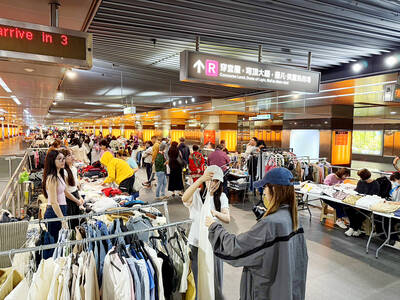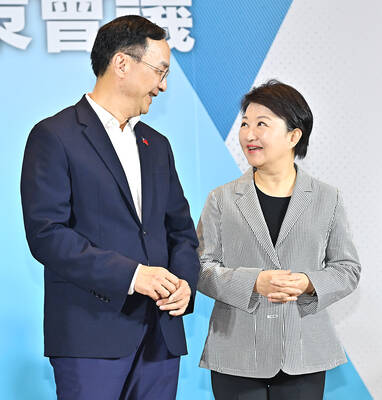Most video gamers probably recognize Shiro Amakusa’s name as a villain from the popular 1990s Samurai Shodown series. In the games, Shiro has renounced his Catholic faith and become an evil cult leader resurrected by a dark god. But in his homeland of Japan’s Amakusa Islands in northwestern Kyushu, he’s still the 17-year-old hero who led a doomed rebellion against the government, which banned Catholicism in 1612 and began violently persecuting its followers.
The Amakusa Christian Museum provides a glimpse of how these “hidden Christians” in the area continued to practice in secret — but their suppression is more striking on the vertical plaques that adorn the entrance to the nearby Myotoku Temple, built in 1645 “to spread the righteous way of the Buddha” and “to destroy the evil cult of Jesus.”
The previously little-known story of these hidden Christians was brought to public consciousness through Martin Scorcese’s 2016 movie Silence, which was shot in Taiwan. The film was the only reason I knew about the area during a family Lunar New Year trip to Kyushu and, my parents being practicing Catholics, we decided to make the pilgrimage after visiting the smoldering volcano of Aso.

Photo: Han Cheung, Taipei Times
The film, which I reviewed in the Taipei Times on Feb. 23, 2017, was overwhelmingly sympathetic toward the perspective of the missionaries, and I wanted to witness the local side of the story.
The hidden Christian sites aren’t just limited to Amakusa island. They are found across the bay on the Shimabara Peninsula and further to the west in Nagasaki, where the Oura Cathedral honors the 26 Holy Martyrs of Japan crucified by the shogun in 1597. The entire journey took us four days, which included various non-religious sites as well.
LAST REFUGE

Photo: Han Cheung, Taipei Times
The first stop is the Amakusa Shiro Memorial Hall on Kamishima island, where Shiro was born to Catholic parents around 1621. With his people suffering from heavy taxation and famine, a teenaged Shiro led a 37,000-strong army of Catholics against the local daimyo in what would be known as the Shimabara Rebellion. The uprising failed, the entire rebel army was beheaded and the government drove all foreigners out of the country and strictly enforced its ban on Christianity.
The museum shows the myriad ways that the hidden Christians were persecuted and forced to renounce their faith, and the creative ways they used to continue worship. On display are paintings of the Buddhist goddess Guanyin, known as Kannon in Japan, holding a child that represents Mary and Jesus, Buddha figurines with crosses attached to the back and secret chambers in wooden pillars to hide their artifacts. There are barely any English descriptions here, including a 16-minute film on Shiro without any subtitles, but the building is funky and there’s a quaint garden with a statue of Shiro pointing to the sky as well as a new-agey “meditation room” where visitors can pay their silent respects to the dead rebels.
Misumi West Port, about a 10-minute drive away, is worth a brief stop. Built in 1884 during Japan’s industrial revolution, the stone port with Dutch-style buildings only flourished for about 10 years and has remained mostly the same since then. A path leads up to the adjacent mountains for sweeping views of the harbor.

Photo: Han Cheung, Taipei Times
There’s not much to see in Amakusa city beside the Christian museum and the anti-Christian temple. The highlights are on the remote southwest corner of the island around the picturesque fishing village of Sakitsu, where Christianity arrived in 1569 and persisted until the ban was lifted in 1873. About 5,000 people in three villages were rounded up in 1805, and only pardoned after they agreed to discard the seashells and medallions they worshipped with.
Built in 1934 atop a former site where locals were forced to trample on holy images or face execution (as depicted in Silence), the gothic Sakitsu Church rises above the two-story traditional houses lining the harbor. Near the village is a white statue of the Virgin Mary looking out to sea, with a viewpoint marked for the perfect sunset shot. We mosey on to Oe Village to see its romanesque cathedral on a hill, one of the first to be built on the island after the ban was lifted.
Despite the perseverance of the hidden Christians, most churches we visit are empty besides tourists. Although no longer oppressed, a Reuters report last year indicated that the hidden Christians are dying out as their descendents aren’t interested in religion. Japan’s population is less than 0.4 percent Catholic, according to a Japan Times report, and even the former hotbed of Nagasaki Prefecture boasts just over 4 percent.

Photo: Han Cheung, Taipei Times
CULTURES COLLIDE
Back on the mainland, we pass by the ruins of Hara Castle, where Shiro and his rebels were besieged by government forces, but I was suffering from Shiro fatigue by that point. Alas, the entire history of the rebellion is retold at the reconstructed 396-year-old Shimabara Castle — although the information is the most accessible here with QR codes on each artifact linking to English descriptions.
From the top of the castle one can gaze toward Mount Unzen, an active volcano that caused Japan’s worst volcanic disaster in 1792. The Unzen Hells, a patchwork of barren sulphuric fields with scalding hot springs, served as torture sites for Christians and sets the opening scene of Silence. It is possible to scale several of the peaks, but thick fog and snow dashed those plans. Still, we took the cable car up to Myokendake peak, where the bright red gates to a shinto shrine provide a splash of color to a landscape of pure white.

Photo: Han Cheung, Taipei Times
Our pilgrimage ends in Nagasaki, best known to the world as the site where Americans dropped the second atomic bomb during World War II. However, there’s much more to the city than death and destruction. When the Japanese expelled nearly all foreigners after the Shimabara Rebellion, the man-made island of Dejima was the country’s only point of contact with the outside world for the next two centuries as Dutch traders were allowed to reside there. Foreign goods and games such as chocolate, tomatoes, coffee, beer, photography, badminton and billiards all entered Japan through this impeccably-preserved neighborhood.
The Chinese were the only other foreigners besides the Dutch allowed to trade with Japan. The city boasts a bustling lantern-lined Chinatown, but the real gem of the area is the quieter historic center to the south, where winding pathways lead to simple but colorful temples.
The foreigner ban was lifted in 1859. All these cultures converge at a pretty stone-paved path named Dutch Slope. Atop the hill, one can see European-style mansions, the Confucius Temple and the Oura Cathedral standing out against modern apartment blocks and black-roof traditional dwellings.
We pass by Shikairou restaurant, which stands next to the site of Japan’s very first bowling alley, and where champon, Nagasaki’s Chinese-influenced signature dish was, first invented in 1899. Making our way up the hill, we arrive at Oura Cathedral, built in 1865 before the ban was lifted to serve the growing foreign population.
A display in the church recounts the story of how nearby hidden Christians showed up at the church one day, revealing to the clergy how they had maintained their faith for more than two centuries. This led to renewed persecution of hidden Christians, who were banished from the area until the ban was lifted.
We see one last piece of Catholicism at the Nagasaki Hypocenter Park where the bomb exploded — a section of the Urakami Cathedral walls. Completed in 1925 (also on a former site where Christians were tortured), it was once the largest Christian structure in the Asia-Pacific before the bomb hit 500 meters away. The wall was moved to this park during reconstruction.
Many lingering questions I had from Silence were answered during this trip, but it’s still quite surprising how the hidden Christians risked death — and often chose death — rather than renouncing their religion. Atop the memorial at nearby Peace Park, through the trees I make out the rebuilt Urakami Cathedral in the distance — a testament to the perseverance of faith.

May 26 to June 1 When the Qing Dynasty first took control over many parts of Taiwan in 1684, it roughly continued the Kingdom of Tungning’s administrative borders (see below), setting up one prefecture and three counties. The actual area of control covered today’s Chiayi, Tainan and Kaohsiung. The administrative center was in Taiwan Prefecture, in today’s Tainan. But as Han settlement expanded and due to rebellions and other international incidents, the administrative units became more complex. By the time Taiwan became a province of the Qing in 1887, there were three prefectures, eleven counties, three subprefectures and one directly-administered prefecture, with

It’s an enormous dome of colorful glass, something between the Sistine Chapel and a Marc Chagall fresco. And yet, it’s just a subway station. Formosa Boulevard is the heart of Kaohsiung’s mass transit system. In metro terms, it’s modest: the only transfer station in a network with just two lines. But it’s a landmark nonetheless: a civic space that serves as much more than a point of transit. On a hot Sunday, the corridors and vast halls are filled with a market selling everything from second-hand clothes to toys and house decorations. It’s just one of the many events the station hosts,

Two moves show Taichung Mayor Lu Shiow-yen (盧秀燕) is gunning for Chinese Nationalist Party (KMT) party chair and the 2028 presidential election. Technically, these are not yet “officially” official, but by the rules of Taiwan politics, she is now on the dance floor. Earlier this month Lu confirmed in an interview in Japan’s Nikkei that she was considering running for KMT chair. This is not new news, but according to reports from her camp she previously was still considering the case for and against running. By choosing a respected, international news outlet, she declared it to the world. While the outside world

Through art and storytelling, La Benida Hui empowers children to become environmental heroes, using everything from SpongeBob to microorganisms to reimagine their relationship with nature. “I tell the students that they have superpowers. It needs to be emphasized that their choices can make a difference,” says Hui, an environmental artist and education specialist. For her second year as Badou Elementary’s artist in residence, Hui leads creative lessons on environmental protection, where students reflect on their relationship with nature and transform beach waste into artworks. Standing in lush green hills overlooking the ocean with land extending into the intertidal zone, the school in Keelung